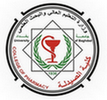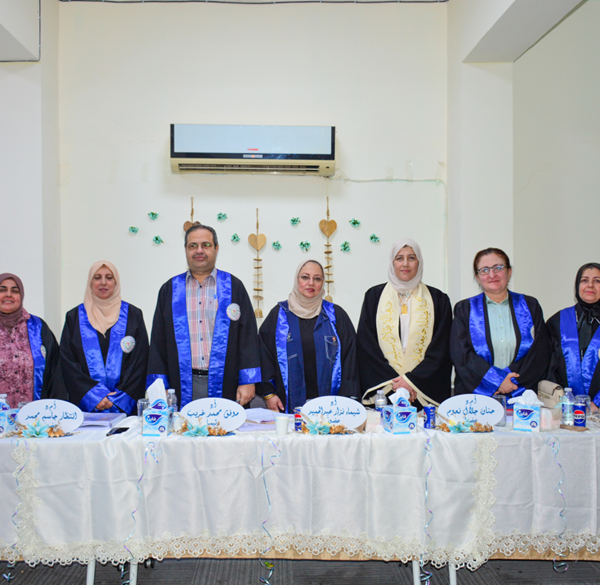The College of Pharmacy discussed the PhD dissertation entitled Olmesartan Medoxomil Nanomiclle as Oral Dosage Form: Formulation ,Characterization and an in-vivo Evaluation” by the student Halah Talal Sulaiman and the supervisor, Professor Dr. Nawal A. Rajab, at the Pharmaceutics Department. The study aimed to generate Olmesartan Medoxomil as a micellar dispersion in the nano range scale utilizing the film hydration process to prepare transparent aqueous formulations, increase drug solubilization, and load into oral fast dissolving film which would improve bioavailability. The study included preparation of micelle dispersions made up of Soluplus, Solutol-HS15, Tween 80, and d-α tocopheryl polyethylene glycol 1000 succinate, alone were prepared. Different gravimetric ratios in a binary system or mixed micelles encompassing SLP with each of TWN80, SLT-H15, and SLP with TPGS were also prepared. The micelle size, polydispersity index (PDI), encapsulation efficiency (EE), drug loading (DL), saturated solubility, solubility factor Sf, and in vitro release study were used to gauge the micellar system’s concentration and polymer type-dependent characteristics. The study concluded that F19 was the best formula which was converted to fast dissolving film and subjected to in vivo study. The in vivo study of optimized FM2 displayed a maximum plasma concentration (Cp) equal to 538.37±6.8 ng/ml, maximum drug concentration reaches at (Tmax) of 0.75 h, and AUC0-48 equal to 6285.766±137.85 ng*h/ml, compared to drug powder and Olmetec® tablet, there were 2.01 and 1.61-fold improvements in bioavailability, respectively which is statically significant at (p<0.05). The results mentioned validate that the developed formulation has the potential to serve as an advanced dosage form that augments drug conveyance, the onset of the action, and the efficacy of the mixed nanomicelle containing fast dissolving film loaded with Olmesartan medoxomil to augment olmesartan bioavailability The study recommend that further prospective studies should be conducted on the optimized OLM-M NM-loaded oral FDF:
- A clinical study is necessary to evaluate the in-vivo antihypertensive effect and bioavailability of OLM-M nanomicelles, incorporating oral film, to show in vitro and in vivo correlation and confirm the effectiveness.
- Undertaking a bioequivalence investigation.
- Investigating the expiration date and economic expenses associated with the production of OLM-M nanomicelles loaded FDF in a large scale to offer cost-effective pricing.





